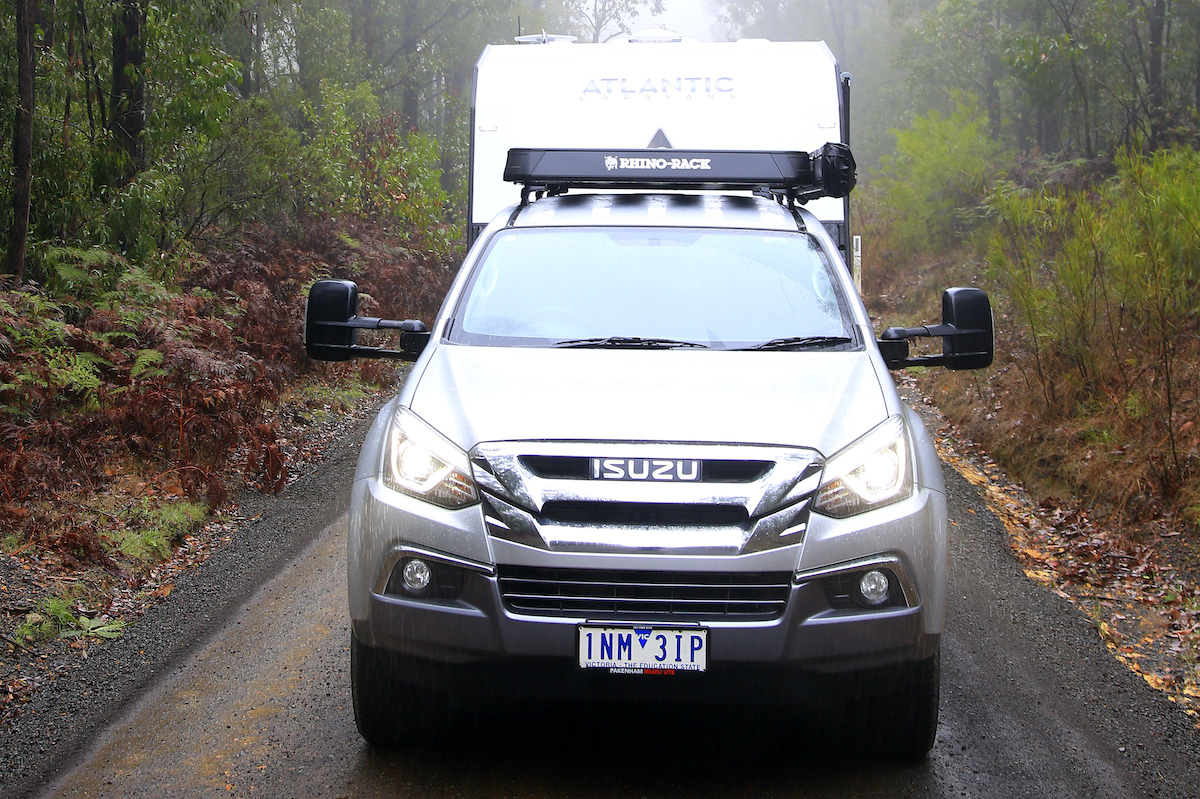Every touring 4WD is going to need a few modifications or accessories. I’m not necessarily talking about mechanical upgrades, though they may well have their place, from diesel filters to transmissions coolers.
Instead, I’m referring to the bits and pieces that make touring life more enjoyable and convenient. With that in mind, these are three 4WD modifications that I’ve made that have arguably made the largest difference to my time on the road.
ROOF RACK
I currently run a Rhino Rack roof rack on my MU-X, while my old 80 Series was fitted out with a cage-style rack by ARB.
A quality roof rack is not cheap but they’re worth their weight in gold. When you’re touring with three kids, or using the third row seating, space in the cargo area is usually at a premium. So you’ll need somewhere to put the gear that you haven’t packed in your van, or items that might be pretty filthy, such as traction boards.
Buying a roof rack, however, requires some consideration. First, they are not always easy to fit yourself and, generally, I’d recommend having the pros do it, which is likely to cost a few hundred dollars. I fitted my Rhino Rack myself, which required drilling holes in the roof in order to rivet the tracks in place. I’m not going to lie: that was nerve-wracking.
Second, it’s important to know your vehicle’s roof load. While a quality aluminium roof rack is unlikely to exceed that on its own, you’ll need to be mindful of the weight of the gear you secure up there. The roof rack will have its own load rating, too, which you’ll need to adhere to.
Third, always consider the Gross Vehicle Mass of your vehicle, i.e., the maximum that the 4WD can weigh, including all payload. The weight of the roof rack must be considered payload. Naturally, this weight (along with the weight of passengers, all gear, etc.) must be factored into the Gross Combined Mass calculations, too.

AWNING
There are plenty of excellent awnings available for 4WDs and, for what they offer in terms of enjoyment and liability around camp, they are a bargain.
A number of years ago, I found myself camping in a tent with the family on the Great Ocean Road. The weather was wild. Bucketing down one day, stinking hot the next. The awning, which was attached to the ARB roof rack on my old Cruiser, saved the trip. It gave us shade in the heat and protected us from much of the rain. Without it, we’d have been stuck inside the tent.
I’m using a Batwing Compact awning, as it provides wrap-around coverage, from the rear edge of the passenger door to the whole of the tailgate area. I’d previously used a side awning, which worked well, but I prefer rear coverage provided by this unit.
There are a number of things to consider when choosing a 4WD awning. One of these is weight, bearing in mind that it will be included as vehicle payload. Coverage area, UV rating, ease of setting up and packing down, and perhaps even ease of installation are among the other factors.

SOLAR
My third favourite modification is my solar panel. I have mounted a 120W panel to the roof rack. Yes, it takes up a considerable amount of space, cutting down on available space for gear. However, it is used to keep a 100Ah deep-cycle auxiliary battery charged in the rear of the 4WD. This battery powers a small Dometic fridge, which I use for drinks, yoghurts for the kids, and other odds and ends that need to be kept cold. On balance, I wouldn’t be without it.
The weight of any solar panels added to a roof rack, or fridges in the car, must be considered as payload as well, of course.

MEET THE AUTHOR

Max Taylor
Max Taylor has been caravanning since he was a kid and was the editor of some of Australia’s most well-known RV publications for almost 10 years.





